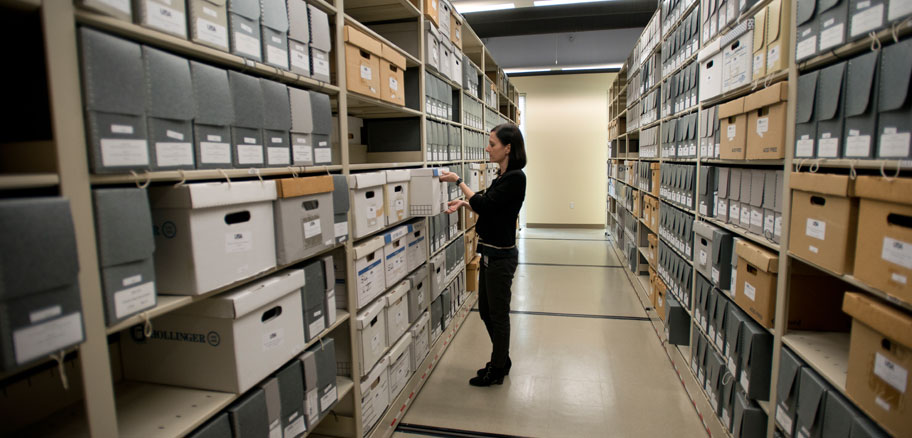Rescue Mission
Library archivists are saving potentially valuable academic research from being lost to relic data devices
The dazzling array of available technology today for data storage makes it almost inconceivable that people once relied on formats like floppy disks or CD-ROMs or Zip disks. Even noted professors were among those who once used the near-obsolete technology, and when some of their work is acquired by the UTSA Libraries’ Special Collections department for its archives, there is often the odd 3.5-inch disk and the like in the mix. But such essentially unusable material is now fueling a project to retrieve potentially important data -- correspondence, early research, drafts of academic papers, email -- from the anachronistic devices.
The effort represents the libraries’ participation in Jump In, an initiative launched by the Society of American Archivists. Special Collections joins other archives participating in the endeavor nationally and is now taking initial steps to build an electronic-records program to create an inventory of “born digital” material found on removable media in their collections. The term born digital describes any materials that were originally created digitally -- papers typed on a computer word processor in the 1980s, for example. Once done, the data would be transferred from outdated formats to a secure server.
Special Collections has inventoried the material -- literally boxes and boxes of stuff -- from the archives of individuals and organizations as part of their collecting strategies. Special Collections is also the repository for the university, where they preserve archival material transferred to the archives or solicited from prominent faculty. Two recent UTSA sources include Norma Cantú, professor emeritus in the department of English who specializes in Latino literature along with border and women’s studies, and Ellen Riojas Clark, professor emeritus in the bicultural-bilingual studies department.
“We don’t really know what’s on these digital sources, but it could be material of value to researchers,” says Amy Rushing, head of Special Collections. “It could be correspondence with colleagues or famous people in the field, research they were working on, drafted papers, photographs. We’re looking for that unique research material.”
Particularly thrilling for UTSA archivist Julianna Barrera-Gomez is not just the glimpse into the academic work of professors that the project provides but also the window into the eras marking the professors’ coming-of-age. Their early years are harnessed forever within the outdated formats, waiting to be coaxed out with the times’ attendant current events, political climate and societal underpinnings, which color the work.
“We’re trying to capture the history of UTSA but also those undercurrents,” Barrera-Gomez says. To illustrate, she notes Clark’s work in the bicultural-bilingual studies department. That program was one of the first after UTSA was founded in 1969 -- a year also marked by watershed legislation that made it no longer a misdemeanor to use a language other than English in Texas classrooms. Among Cantú’s material is insight into the early experiences that helped shape her storied career, also in a time of societal transformation.
The work to extract the material and preserve it is painstaking, a process somewhat akin to a CSI scene but with an archival twist. Using digital forensics and archives software on a dedicated computer called a quarantine station, team members access and process the digital media. Much like a climate-controlled quarantine room Special Collections uses to isolate and debug newly acquired paper archives, the quarantine station isolates and runs virus checks on the newly transferred files so that they don’t contaminate existing files. Securing compatible technology to read and scan the material requires hours of scouring through eBay and other Internet sites.
Despite the degree of difficulty, the work is equal parts hands-on exploration and labor of love, according to Barrera-Gomez. “That’s what I really love about getting these collections,” she says. “We’re being proactive and identifying faculty whose papers we would like to acquire for the archives so that we can collaborate with them now to identify any born-digital work that could be on this fragile media and plan how we will acquire and preserve it.”
–Tony Cantú

